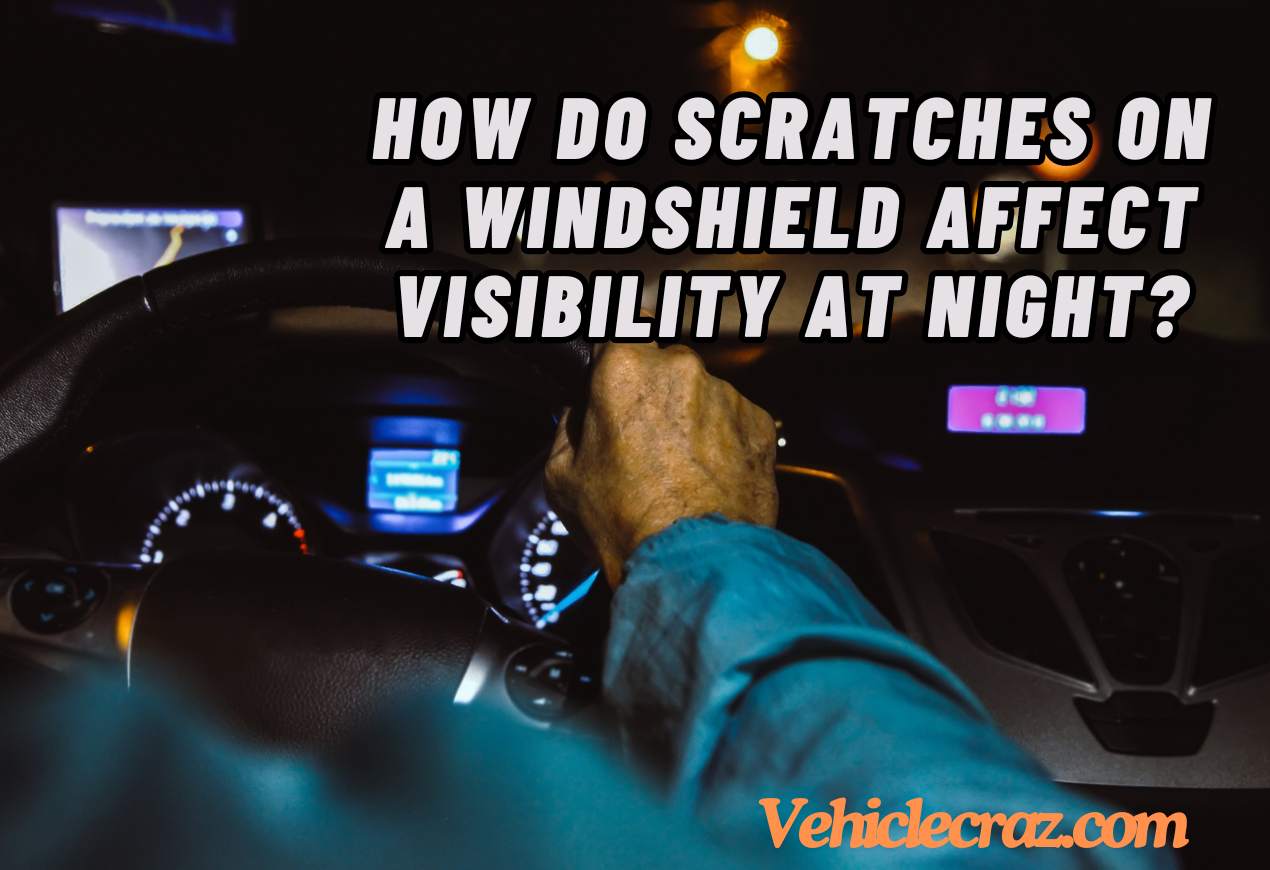How Do Scratches on a Windshield Affect Visibility at Night?
Many drivers overlook minor issues like scratches on a windshield affect visibility at night. Scratches on your windshield don’t just mar the appearance of your vehicle—they can distort light and create glare, making it harder to see clearly in low-light situations. How do scratches on a windshield affect visibility at night? You are about to find it out.
How Do Scratches on a Windshield Affect Visibility at Night?
Windshield scratches, while seemingly minor, can significantly impact nighttime driving by affecting visibility in several ways. Understanding these effects is crucial for maintaining road safety and ensuring a clear view during low-light conditions.
Reflection and Glare
Scratches on a windshield disrupt the smooth surface of the glass, causing light to scatter rather than pass through evenly. At night, this distortion becomes particularly problematic.
When oncoming vehicle headlights hit a scratched windshield, the light is scattered in multiple directions. This scattering creates a glare effect, which can be blinding and make it difficult to see the road and other vehicles clearly.
Similarly, streetlights can create distorted reflections when they encounter scratches. These reflections can contribute to visual confusion and reduce the clarity of your view of the road and surroundings.
Reduced Clarity
Scratches on the windshield can cause the glass to appear hazy or blurry, which impairs visibility.
As light passes through scratched areas, it can create distortions in the view. This haziness can make it challenging to distinguish between objects and road markings, particularly in low-light conditions.
Clear vision is essential for accurately judging distances and depth. Scratches can interfere with depth perception by causing visual distortions, which can be dangerous when navigating curves or assessing the distance between vehicles.
Increased Difficulty in Spotting Road Hazards
At night, the challenge of spotting road hazards such as debris, potholes, or animals is heightened.
The reduced lighting conditions at night make it harder to see obstacles on the road. Scratches that scatter light can further obscure these hazards, increasing the risk of accidents.
The combination of glare, reduced clarity, and difficulty spotting hazards can slow down your reaction time. This delay can be critical in avoiding potential collisions or other dangerous situations.
Weather Conditions
Weather can exacerbate the effects of scratches on a windshield. Water droplets from rain or fog can magnify the impact of scratches, leading to increased glare and further reduced visibility. The scratches can trap water, creating additional distortions and making it harder to see through the glass.
Scratches can also trap snow and ice, which can obstruct your view and create additional hazards during winter driving.
Safety Risks Associated with Poor Nighttime Visibility
Poor nighttime visibility, whether due to scratches on the windshield, inadequate headlights, or other factors, presents several significant safety risks for drivers. Understanding these risks is crucial for taking preventive measures and ensuring safe driving conditions during low-light situations.
Increased Likelihood of Accidents
Reduced visibility makes it more challenging to see and react to potential hazards, which increases the likelihood of accidents.
When visibility is compromised, drivers may not see obstacles, other vehicles, or changes in the road conditions until it’s too late. This delay can result in collisions or near-miss situations.
Poor visibility can lead to incorrect judgments about the distance between your vehicle and others, affecting your ability to safely navigate through traffic, maintain a safe following distance, or execute maneuvers such as lane changes and turns.
Difficulty in Spotting Road Hazards
At night, it becomes more difficult to identify and respond to various road hazards.
Objects such as fallen branches, tire debris, or road kill may be harder to see in low-light conditions. Scratches and distortions on the windshield can exacerbate this problem by further obscuring your view.
Poor visibility makes it challenging to spot potholes, cracks, or other road surface irregularities. Driving over these hazards can lead to vehicle damage, loss of control, or accidents.
Reduced Ability to Detect Other Road Users
Nighttime visibility issues can impact your ability to see other road users, including.
Pedestrians may become less visible at night, especially if they are not wearing reflective clothing. Scratches on the windshield or glare from headlights can further obscure their presence.
Smaller road users, such as cyclists and motorcyclists, can be difficult to spot in the dark. This difficulty is compounded by visibility issues caused by scratches or other impairments.
Compromised Depth Perception
Depth perception is crucial for safe driving, particularly at night. Poor visibility can affect your ability to accurately gauge distances between your vehicle and other objects or vehicles. This misjudgment can lead to unsafe following distances or difficulties in navigating intersections and turns.
Inadequate visibility can also affect your ability to judge the speed of approaching vehicles or objects, making it harder to make timely and safe driving decisions.
Increased Fatigue and Stress
Driving in conditions with poor visibility can lead to increased driver fatigue and stress. Drivers may need to concentrate more intensely to compensate for reduced visibility, which can lead to mental fatigue over time.
The constant strain of dealing with diminished visibility and potential hazards can increase stress levels, further impacting driving performance and safety.
Impaired Reaction to Road Signs and Signals
Visibility issues can make it challenging to read and respond to road signs and traffic signals. Scratches and glare can obscure road signs, making it harder to read important information such as speed limits, warning signs, and directions.
Poor visibility may affect your ability to see traffic signals or respond to changes in signal lights, leading to potential traffic violations or unsafe driving behaviors.
Conclusion
In summary, poor nighttime visibility poses significant safety risks, including an increased likelihood of accidents, difficulty in spotting road hazards, reduced ability to detect other road users, compromised depth perception, increased driver fatigue and stress, and impaired reaction to road signs and signals.
Addressing visibility issues, such as repairing scratches on the windshield, maintaining proper headlight alignment, and ensuring a clear view of the road, is essential for enhancing safety and preventing accidents during night driving.


I’m Alex, a seasoned mechanical teacher with over 20 years of hands-on experience in Australia. My passion for all things automotive has driven me to establish this blog, aiming to share my wealth of knowledge and expertise with fellow enthusiasts, DIYers, and anyone keen on understanding the mechanics behind the machines we rely on daily.



![Airbag Light On and Horn Not Working? [SOLVED]](https://vehiclecraz.com/wp-content/uploads/2024/08/Airbag-Light-On-and-Horn-Not-WorkingArcadia-768x524.jpg)



